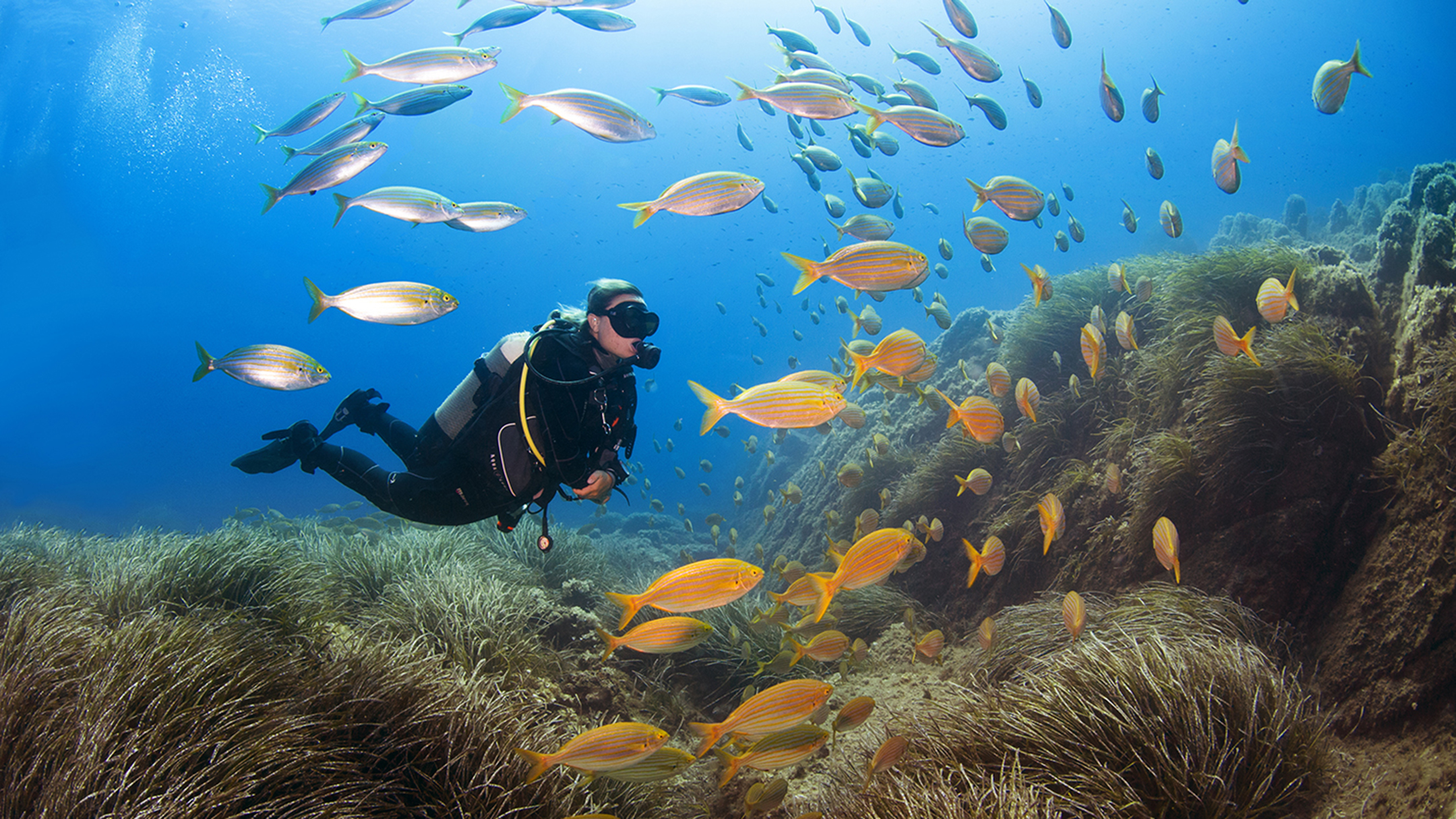D. POINTS IN NORTH SARDINIA
The sea of Sardinia is famous all over the world for its clear and crystalline waters, ideal for any type of diving and those who do diving know it well. Every corner of the Sardinian coast is in fact a unique place, where immersing yourself becomes an unmissable and incredible experience.
All you need, in addition to the passion for underwater activities, is a diving suit and a camera to capture the wonderful backdrops, the colorful fish and crustaceans and even the red corals with their inlays illuminated by the sun’s rays that penetrate in the water in depth.
One of the most beautiful scenery for scuba diving in Sardinia is the famous Portone di Capofigari, in Golfo Aranci. The name is already a whole program! In fact, this “door" gives access to a tunnel that extends up to a hundred meters underwater and leads to Dromia, a room full of bright and surprising colors created by the effects of light that infiltrates the slits on the rocks. A tip for the most experienced and expert divers: go down to 35 meters to see an ancient Byzantine anchor intact and in excellent condition between lobster and ceriantus. A show! Not far from there is the cave of Satan, which in spite of the name, has nothing to scare you, but that will surely leave you breathless. This 12 meters submerged cave is covered entirely with sponges and yellow Leptosamnia and during the descent you can meet in the rocky ravines, gronchi, moray eels, octopus and very nice colored seahorses.
Move along the eastern coast of Sardinia for a dip where the water is bluer, for breathtaking water landscapes that you will carry in your heart for the rest of your life. In Santa Teresa di Gallura, there is the Secca of Porto Leccio that has nothing to envy to the tropical backdrops we so much daydream. Posidonia, which populates the stranger most superficial of the sea, leaves space to the red coral very alive in an explosion of shapes and colors that nestle on the walls of the dry with peaks submerged up to 3 meters deep.

Il mare di Sardegna è famoso in tutto il mondo per le sue acque limpide e cristalline, ideali per qualsiasi tipo di immersione e chi fa immersioni lo conosce bene. Ogni angolo della costa sarda è infatti un luogo unico, dove immergersi diventa un’esperienza imperdibile e incredibile.
Tutto ciò di cui hai bisogno, oltre alla passione per le attività subacquee, è una tuta subacquea e una macchina fotografica per catturare i meravigliosi fondali, i pesci colorati e i crostacei e persino i coralli rossi con i loro intarsi illuminati dai raggi del sole che penetrano nell’acqua in profondità.
Uno dei paesaggi più belli per le immersioni subacquee in Sardegna è il famoso Portone di Capofigari, a Golfo Aranci. Il nome è già un intero programma! In fatti, questa “porta" dà accesso a un tunnel che si estende fino a un centinaio di metri sott’acqua e conduce a Dromia, una stanza piena di colori luminosi e sorprendenti creati dagli effetti della luce che si infiltra nelle fessure sulle rocce. Un consiglio per i subacquei più esperti ed esperti: scendete a 35 metri per vedere un’antica ancora bizantina intatta e in ottime condizioni tra aragosta e ceriantus. Uno spettacolo! Non lontano da lì c’è la grotta di Satana, che nonostante il nome, non ha nulla che ti spaventa, ma che sicuramente ti lascerà senza fiato. Questa grotta sommersa di 12 metri è interamente ricoperta di spugne e Leptosamnia gialla e durante la discesa ci si può incontrare nelle gole rocciose, gronchi, murene, polpi e cavallucci marini molto colorati.
Muoviti lungo la costa orientale della Sardegna per un tuffo dove l’acqua è più blu, per paesaggi d’acqua mozzafiato che porterai nel tuo cuore per il resto della tua vita. A Santa Teresa di Gallura, c’è la Secca di Porto Leccio che non ha nulla da invidiare agli sfondi tropicali che tanto sogniamo ad occhi aperti. La posidonia, che popola lo straniero più superficiale del mare, lascia lo spazio al corallo rosso molto vivo in un’esplosione di forme e colori che si annidano sulle pareti dell’asciutto con cime sommerse fino a 3 metri di profondità

